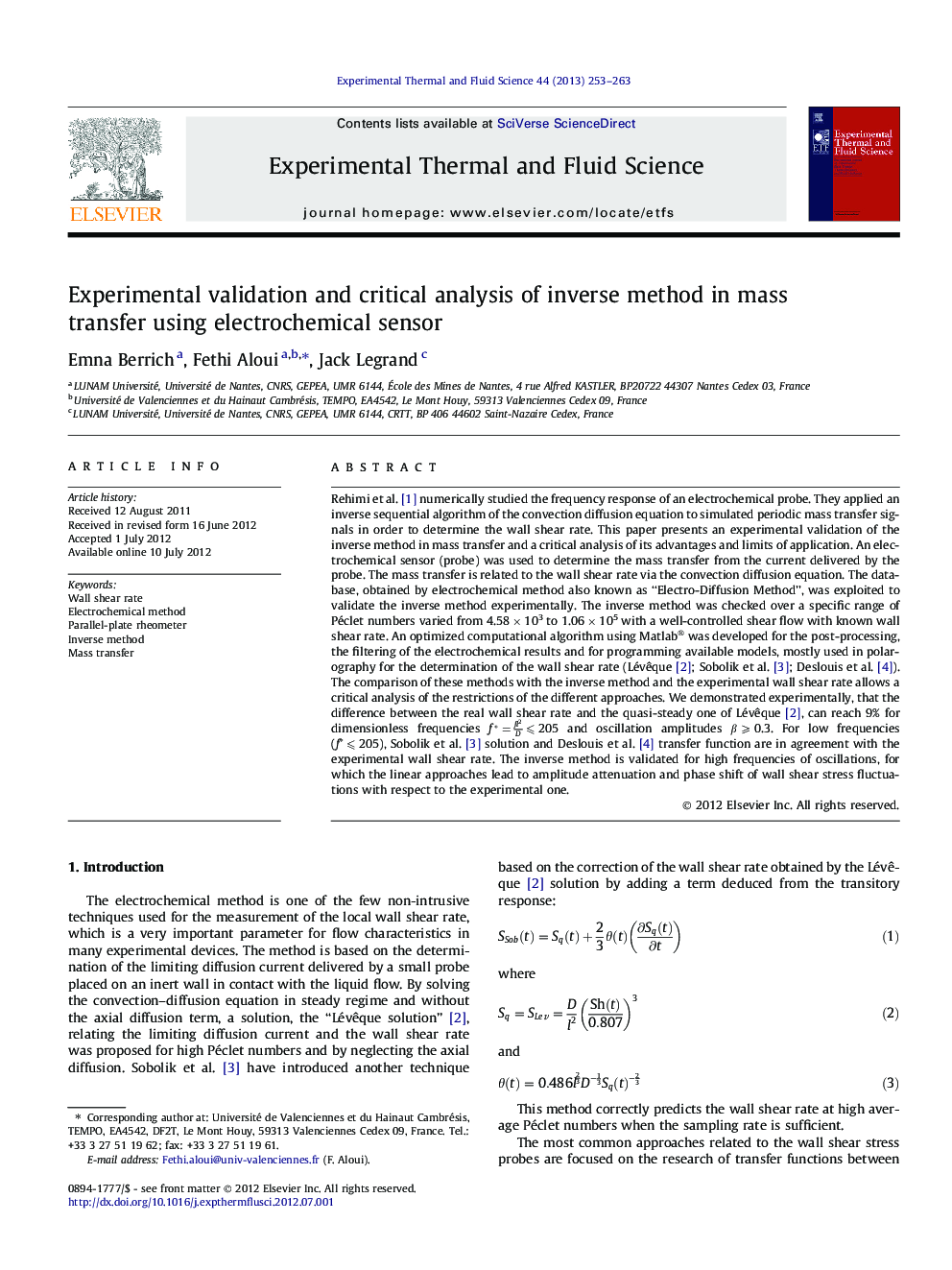| کد مقاله | کد نشریه | سال انتشار | مقاله انگلیسی | نسخه تمام متن |
|---|---|---|---|---|
| 651512 | 1457432 | 2013 | 11 صفحه PDF | دانلود رایگان |

Rehimi et al. [1] numerically studied the frequency response of an electrochemical probe. They applied an inverse sequential algorithm of the convection diffusion equation to simulated periodic mass transfer signals in order to determine the wall shear rate. This paper presents an experimental validation of the inverse method in mass transfer and a critical analysis of its advantages and limits of application. An electrochemical sensor (probe) was used to determine the mass transfer from the current delivered by the probe. The mass transfer is related to the wall shear rate via the convection diffusion equation. The database, obtained by electrochemical method also known as “Electro-Diffusion Method”, was exploited to validate the inverse method experimentally. The inverse method was checked over a specific range of Péclet numbers varied from 4.58 × 103 to 1.06 × 105 with a well-controlled shear flow with known wall shear rate. An optimized computational algorithm using Matlab® was developed for the post-processing, the filtering of the electrochemical results and for programming available models, mostly used in polarography for the determination of the wall shear rate (Lévêque [2]; Sobolik et al. [3]; Deslouis et al. [4]). The comparison of these methods with the inverse method and the experimental wall shear rate allows a critical analysis of the restrictions of the different approaches. We demonstrated experimentally, that the difference between the real wall shear rate and the quasi-steady one of Lévêque [2], can reach 9% for dimensionless frequencies f∗=fl2D⩽205 and oscillation amplitudes β ⩾ 0.3. For low frequencies (f∗ ⩽ 205), Sobolik et al. [3] solution and Deslouis et al. [4] transfer function are in agreement with the experimental wall shear rate. The inverse method is validated for high frequencies of oscillations, for which the linear approaches lead to amplitude attenuation and phase shift of wall shear stress fluctuations with respect to the experimental one.
Journal: Experimental Thermal and Fluid Science - Volume 44, January 2013, Pages 253–263